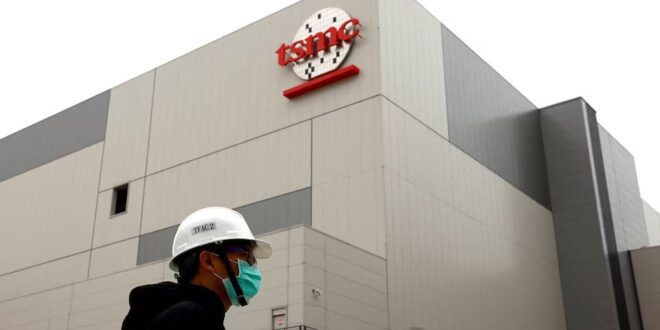TAIPEI: The powerful earthquake that hit semiconductor powerhouse Taiwan last week may push up chip prices temporarily, according to market watchers.
On April 3, an earthquake with a magnitude of 7.4 struck off the east coast of the island, home to 18% of global chip manufacturing capacity and where approximately 92% of the world’s advanced semiconductors are produced, putting the tech industry on edge.
Following the quake, TSMC, the world’s largest contract chipmaker, and a number of other chip firms operating on the island took precautionary measures such as pausing the operations of some facilities.
In the memory-chip sector, two companies, US-based Micron Technology, and Nanya, temporarily suspended operations.
Micron said it is evaluating the impacts of the quake on its manufacturing plants in Linkou and Taichung, while Nanya also said its DRAM fabrication plant in New Taipei was affected.
While the damage caused by the temporary disruption in operation on the two memory chipmakers – which hold 21% of the global market share combined – appears to be limited, it may have rippling effects to raise the price of DRAM chips in the April to June period, analysts said.
The price of chips is likely to go up if supply falls short of demand.
“Due to the impact of the earthquake, memory chip suppliers are likely to gain the negotiating power in DRAM prices,” KB Securities said in a report last Friday.
According to TrendForce, Micron has led the suspension of DRAM pricing, with a reassessment of post-disaster losses to restart negotiations for second-quarter contract prices.
Opting to wait and see the market direction, market leaders Samsung Electronics and SK hynix have also halted their pricing, although neither supplier has DRAM production in Taiwan.
“While there may be a slight short-term increase in DRAM spot prices, the continuation of this trend is uncertain due to persistent weak demand, TrendForce said in its analysis. “It’s further noted that DRAM suppliers and module factories have temporarily ceased pricing activities, reflecting a cautious approach in the aftermath of the earthquake.”
In the October to December period last year, Samsung Electronics took 45.5% of the global DRAM market share, and SK hynix took 31.8 %. Micron came third, posting 19.2%. — The Korea Herald/ANN
 BeritaKini.biz Berita Viral Terkini di Malaysia
BeritaKini.biz Berita Viral Terkini di Malaysia





